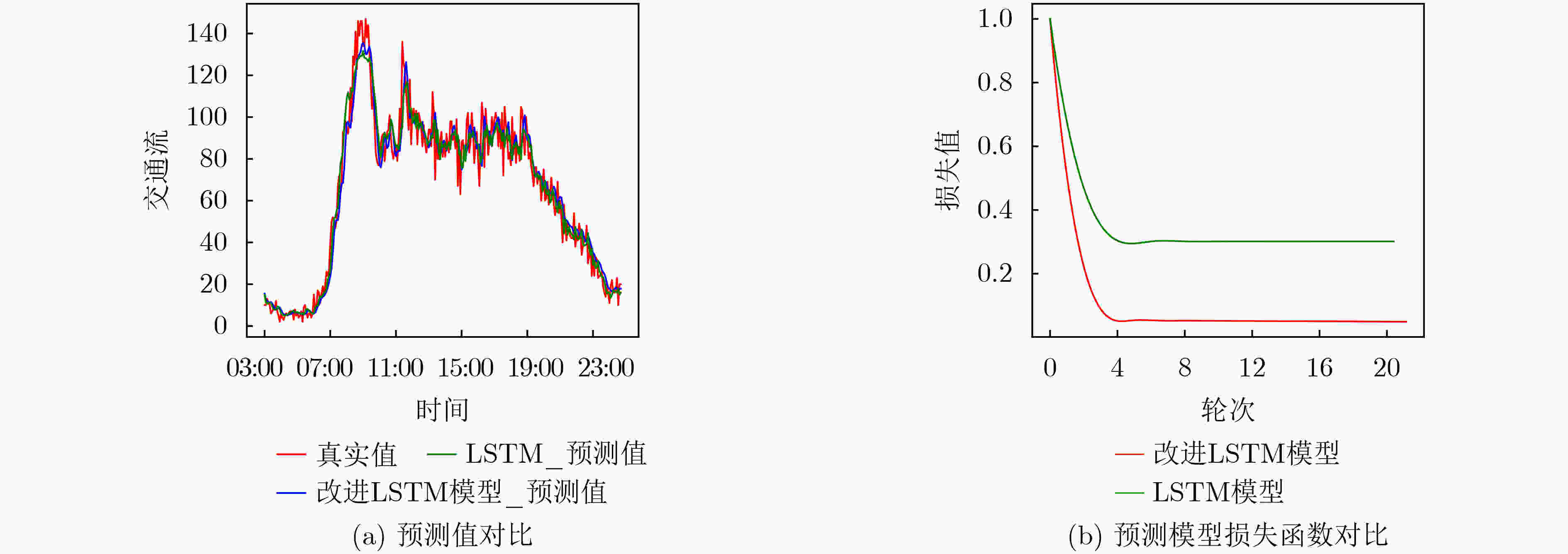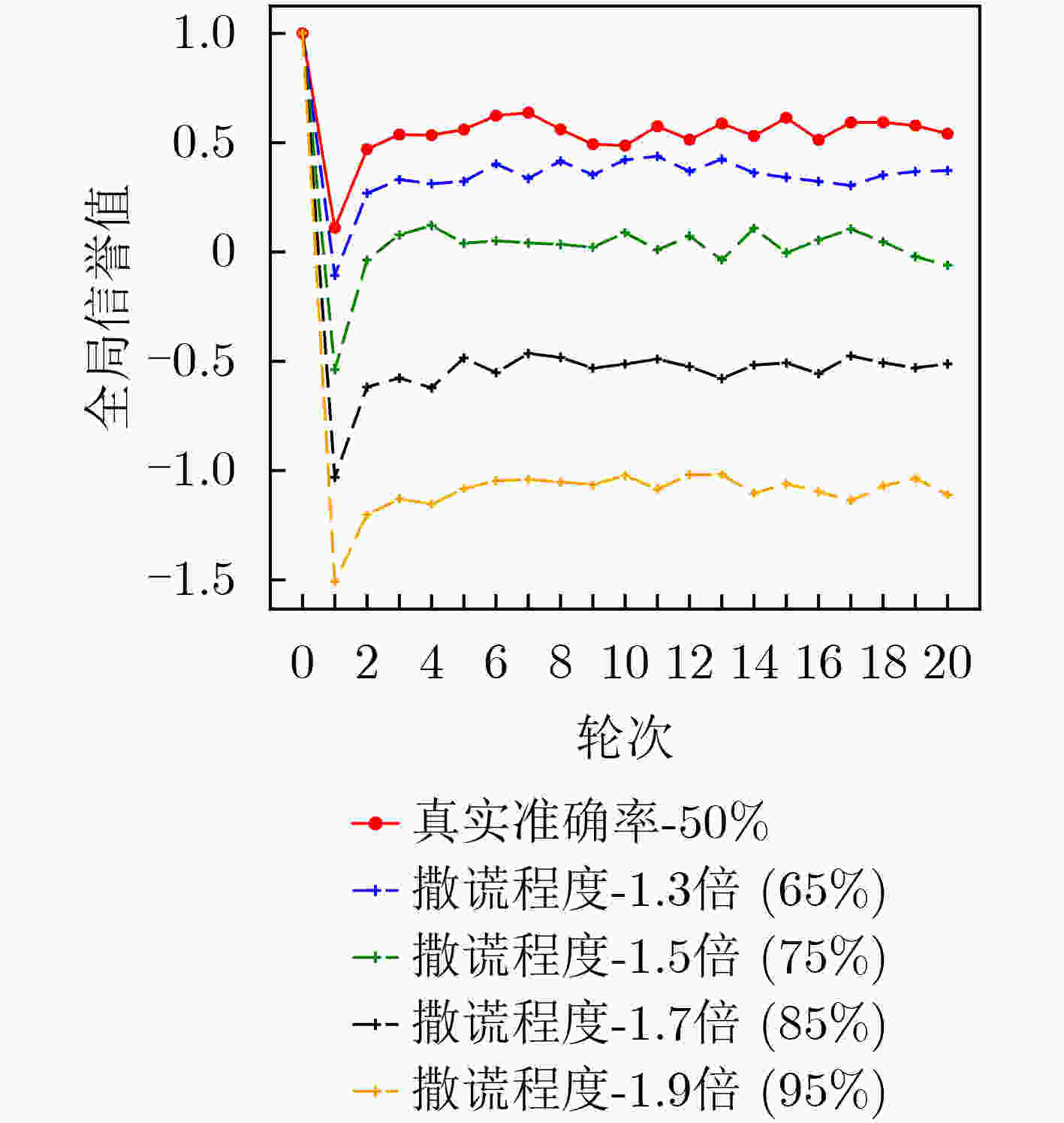| [1] |
MEDINA-SALGADO B, SÁNCHEZ-DELACRUZ E, POZOS-PARRA P, et al. Urban traffic flow prediction techniques: A review[J]. Sustainable Computing: Informatics and Systems, 2022, 35: 100739. doi: 10.1016/j.suscom.2022.100739.
|
| [2] |
LIU Yi, YU J J Q, KANG Jiawen, et al. Privacy-preserving traffic flow prediction: A federated learning approach[J]. IEEE Internet of Things Journal, 2020, 7(8): 7751–7763. doi: 10.1109/JIOT.2020.2991401.
|
| [3] |
LI Cong and XU Pei. Application on traffic flow prediction of machine learning in intelligent transportation[J]. Neural Computing and Applications, 2021, 33(2): 613–624. doi: 10.1007/s00521-020-05002-6.
|
| [4] |
RAZALI N A M, SHAMSAIMON N, ISHAK K K, et al. Gap, techniques and evaluation: Traffic flow prediction using machine learning and deep learning[J]. Journal of Big Data, 2021, 8(1): 152. doi: 10.1186/s40537-021-00542-7.
|
| [5] |
ZHANG Hongyi, DAKKAK A, MATTOS D I, et al. Towards federated learning: A case study in the telecommunication domain[C]. The 12th International Conference on Software Business (ICSOB), Drammen, Norway, 2021: 238–253.
|
| [6] |
JIMÉNEZ-LOSADA A and ORDÓÑEZ M. Sharing profits in formal fuzzy contexts[J]. Fuzzy Sets and Systems, 2023, 466: 108452. doi: 10.1016/j.fss.2022.12.008.
|
| [7] |
YANG Shuo, WU Fan, TANG Shaojie, et al. On designing data quality-aware truth estimation and surplus sharing method for mobile crowdsensing[J]. IEEE Journal on Selected Areas in Communications, 2017, 35(4): 832–847. doi: 10.1109/JSAC.2017.2676898.
|
| [8] |
JUAREZ R, NITTA K, and VARGAS M. Coalitional efficient profit-sharing[J]. Economics Letters, 2021, 204: 109875. doi: 10.1016/j.econlet.2021.109875.
|
| [9] |
WUMAIER H, GAO Jian, and ZHOU Jin. Short-term forecasting method for dynamic traffic flow based on stochastic forest algorithm[J]. Journal of Intelligent & Fuzzy Systems, 2020, 39(2): 1501–1513. doi: 10.3233/JIFS-179924.
|
| [10] |
ZHOU Teng, HAN Guoqiang, XU Xuemiao, et al. A learning-based multimodel integrated framework for dynamic traffic flow forecasting[J]. Neural Processing Letters, 2019, 49(1): 407–430. doi: 10.1007/s11063-018-9804-x.
|
| [11] |
ZHENG Jianhu and HUANG Mingfang. Traffic flow forecast through time series analysis based on deep learning[J]. IEEE Access, 2020, 8: 82562–82570. doi: 10.1109/ACCESS.2020.2990738.
|
| [12] |
ZHANG Chuanting, DANG Shuping, SHIHADA B, et al. Dual attention-based federated learning for wireless traffic prediction[C]. The 2021 IEEE Conference on Computer Communications (IEEE INFOCOM), Vancouver, Canada, 2021: 1–10. doi: 10.1109/INFOCOM42981.2021.9488883.
|
| [13] |
ZHANG Pengfei, CHENG Xiang, SU Sen, et al. Effective truth discovery under local differential privacy by leveraging noise-aware probabilistic estimation and fusion[J]. Knowledge-Based Systems, 2023, 261: 110213. doi: 10.1016/j.knosys.2022.110213.
|
| [14] |
FENG Jun, YANG L T, ZHU Qing, et al. Privacy-preserving tensor decomposition over encrypted data in a federated cloud environment[J]. IEEE Transactions on Dependable and Secure Computing, 2020, 17(4): 857–868. doi: 10.1109/TDSC.2018.2881452.
|
| [15] |
FENG Jun, YANG L T, REN Bocheng, et al. Tensor recurrent neural network with differential privacy[J]. IEEE Transactions on Computers, 2024, 73(3): 683–693. doi: 10.1109/TC.2023.3236868.
|
| [16] |
GUO Hao, MEESE C, LI Wanxin, et al. B2SFL: A Bi-level blockchained architecture for secure federated learning-based traffic prediction[J]. IEEE Transactions on Services Computing, 2023, 16(6): 4360–4374. doi: 10.1109/TSC.2023.3318990.
|
| [17] |
QI Yuanhang, HOSSAIN M S, NIE Jiangtian, et al. Privacy-preserving blockchain-based federated learning for traffic flow prediction[J]. Future Generation Computer Systems, 2021, 117: 328–337. doi: 10.1016/j.future.2020.12.003.
|
| [18] |
MEESE C, CHEN Hang, ASIF S A, et al. BFRT: Blockchained federated learning for real-time traffic flow prediction[C]. The 22nd IEEE International Symposium on Cluster, Cloud and Internet Computing (CCGrid), Taormina, Italy, 2022: 317–326. doi: 10.1109/CCGrid54584.2022.00041.
|
| [19] |
YU Han, LIU Zelei, LIU Yang, et al. A sustainable incentive scheme for federated learning[J]. IEEE Intelligent Systems, 2020, 35(4): 58–69. doi: 10.1109/MIS.2020.2987774.
|
| [20] |
LIU Zelei, CHEN Yuanyuan, YU Han, et al. GTG-Shapley: Efficient and accurate participant contribution evaluation in federated learning[J]. ACM Transactions on Intelligent Systems and Technology, 2022, 13(4): 60. doi: 10.1145/3501811.
|
| [21] |
NG J S, LIM W Y B, XIONG Zehui, et al. A hierarchical incentive design toward motivating participation in coded federated learning[J]. IEEE Journal on Selected Areas in Communications, 2022, 40(1): 359–375. doi: 10.1109/JSAC.2021.3126057.
|
| [22] |
KILIÇ D K and UĞUR Ö. Hybrid wavelet-neural network models for time series[J]. Applied Soft Computing, 2023, 144: 110469. doi: 10.1016/j.asoc.2023.110469.
|
| [23] |
PENG Le, LUO Gaoxiang, WALKER A, et al. Evaluation of federated learning variations for COVID-19 diagnosis using chest radiographs from 42 US and European hospitals[J]. Journal of the American Medical Informatics Association, 2023, 30(1): 54–63. doi: 10.1093/jamia/ocac188.
|
| [24] |
WANG Tianxiang, ZHENG Zhonglong, TANG Changbing, et al. Aggregation rules based on stochastic gradient descent in Byzantine consensus[C]. The IEEE 8th Joint International Information Technology and Artificial Intelligence Conference (ITAIC), Chongqing, China, 2019: 317–324. doi: 10.1109/ITAIC.2019.8785560.
|
| [25] |
BONAWITZ K, IVANOV V, KREUTER B, et al. Practical secure aggregation for privacy-preserving machine learning[C]. The 24th ACM SIGSAC Conference on Computer and Communications Security (ACM CCS), Dallas, USA, 2017: 1175–1191. doi: 10.1145/3133956.3133982.
|
| [26] |
LI Dun, HAN Dezhi, WENG T H, et al. Blockchain for federated learning toward secure distributed machine learning systems: A systemic survey[J]. Soft Computing, 2022, 26(9): 4423–4440. doi: 10.1007/s00500-021-06496-5.
|
| [27] |
ZHU Shanliang, ZHAO Yu, ZHANG Yanjie, et al. Short-term traffic flow prediction with wavelet and multi-dimensional Taylor network model[J]. IEEE Transactions on Intelligent Transportation Systems, 2021, 22(5): 3203–3208. doi: 10.1109/TITS.2020.2977610.
|
| [28] |
CUI Laizhong, SU Xiaoxin, and ZHOU Yipeng. A fast blockchain-based federated learning framework with compressed communications[J]. IEEE Journal on Selected Areas in Communications, 2022, 40(12): 3358–3372. doi: 10.1109/JSAC.2022.3213345.
|
| [29] |
CHEN Chao. Freeway performance measurement system (PeMS)[D]. [Ph. D. dissertation], University of California, 2002.
|
| [30] |
LÜ Yisheng, DUAN Yanjie, KANG Wenwen, et al. Traffic flow prediction with big data: A deep learning approach[J]. IEEE Transactions on Intelligent Transportation Systems, 2015, 16(2): 865–873. doi: 10.1109/TITS.2014.2345663.
|






 下载:
下载:







 下载:
下载:
